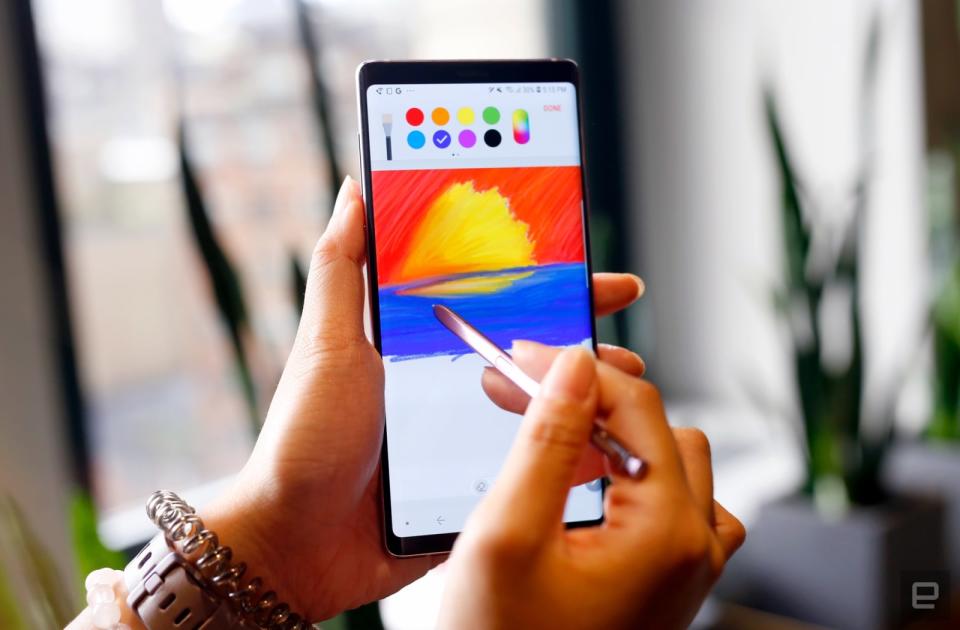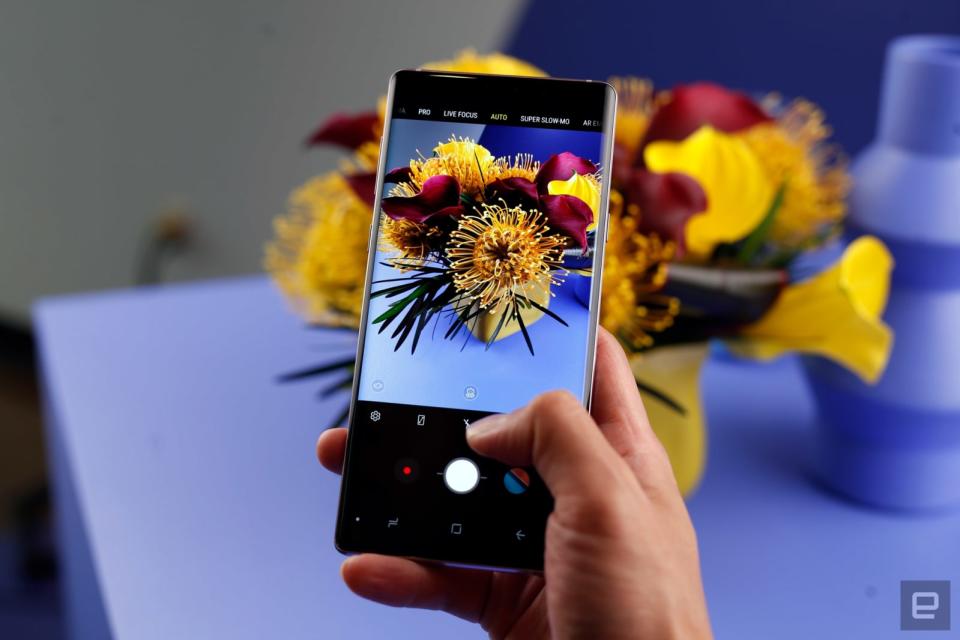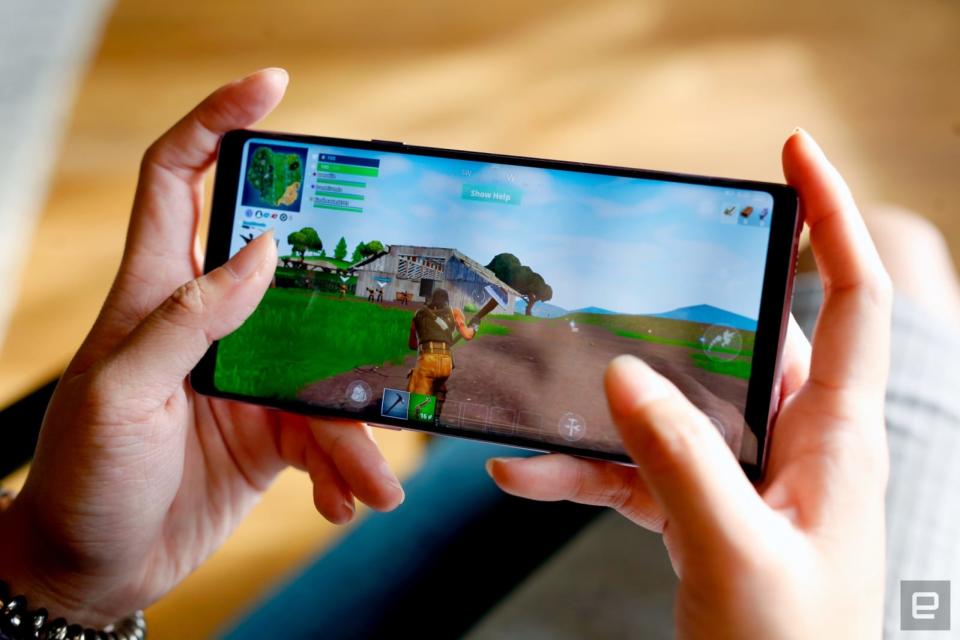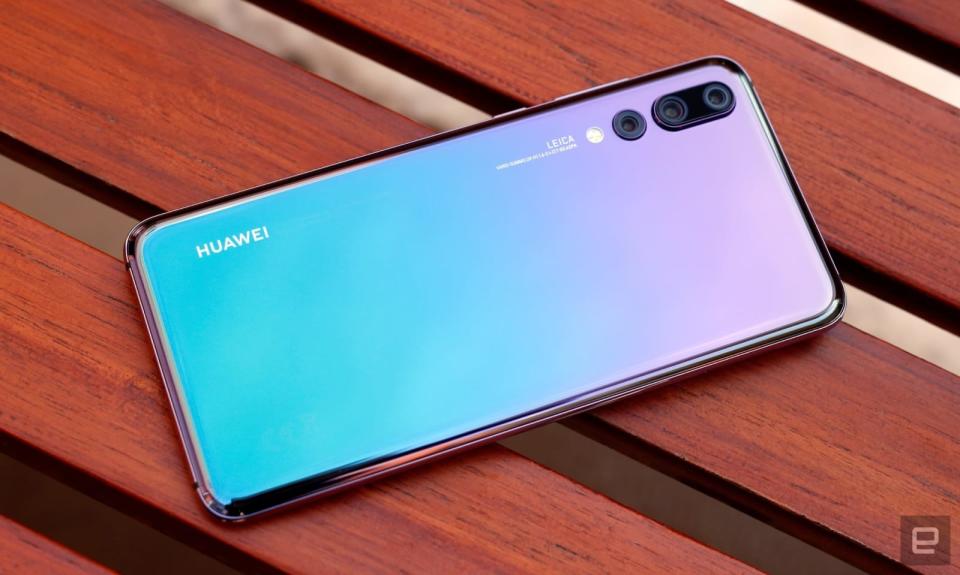Samsung Galaxy Note 9 review: A better Note for most of us
Bigger and more useful than before.
The biggest, beastliest phone of the year is here, and spoiler alert, the Galaxy Note 9 lives up to the lofty expectations. In addition to a huge battery, large screen and generous onboard storage, Samsung taught the old S Pen a few new tricks that should make the stylus more useful to a wide audience. You'll have a hard time finding a phone that does more, and though I'm reluctant to recommend any device that costs this much, I have a feeling power users will want to get their hands on this thing. The Note 9 has a few minor quirks, but overall it feels like more than the sum of its parts. Many of the Note 9's improvements are performance related and aren't easy to demonstrate, but the S Pen's updates are so compelling I keep showing them off to people. Samsung's stylus has long been a hallmark of the Note series, but this year, the S Pen gained much more functionality. By adding a Bluetooth Low Energy module and a supercapacitor to provide power, Samsung turned the pen into a full-fledged remote control. By default, long-pressing the S Pen button launches the camera, though you can change this to be any other app. You can double-click to switch between the front and rear cameras, then click once to snap a photo. It's incredibly handy, and honestly it's such a joy to be able to set the phone down somewhere or hold it up at more-awkward angles than normal and still be able to trigger the shutter without fumbling for the volume button or ending up with a blurry mess. People have argued it's redundant: You can set a timer or use the open-palm gesture to trigger the selfie camera. But with the S Pen remote, you can do so much more: Think higher-quality selfies with the rear camera and switching cameras from afar. You can use the S Pen from up to 30 feet away, giving you plenty more room to play with. I could go on for days about the benefits here. For those who care less about selfies, the S Pen is still pretty useful. Use it to skip through slides in a presentation, for instance, or tracks on a Spotify playlist. In Chrome, you can press once to go back a page and twice to go forward. Obviously, some of these integrations are less useful than others -- going back in Chrome is easier with the on-screen button, for example. But at least you don't have to guess when you can use the remote. A badge appears to alert you, and hovering over it tells you what actions are available. In addition to apps from Samsung, Google and Microsoft, only two of my third-party apps currently offer S Pen remote controls. Hopefully, more developers will use Samsung's open SDK to integrate this feature over time. New remote controls aside, the S Pen is still super useful for taking notes and sketching on the go. Drawing with it on the Note 9's beautiful 6.4-inch screen is fluid and responsive, and all the useful Screen Off Memo and Air Command features are still here. The stylus has the same 0.7mm nib and 4,096 levels of pressure sensitivity as its predecessor, and now it comes in specific colors, depending on your handset. My lavender Note 9 has a purple S Pen, and the blue model has a neon yellow stylus that pops like a highlighter. Although the S Pen has a supercapacitor to power that Bluetooth Low Energy module, you can still use it to draw even without a charge. After about 40 minutes, I'd start getting low-battery notifications from the S Pen, but that just meant the remote controls wouldn't work. I could still draw and use Air Command without a problem. Samsung's done a good job of adding new features without messing up the existing ones. The same can be said of the Note 9's cameras. Hardware-wise, you'll find the setup here similar to the S9+. It has two 12-megapixel sensors, one with a telephoto lens and the other a wide angle. The telephoto camera has the Dual Aperture feature from the S9+, which opens up to f/1.5 to let in more light. But Samsung added something it calls Scene Optimizer, which is basically its version of Huawei's and LG's AI photography feature. When you point the Note 9 at something, it will try to recognize what it's looking at and tweak the camera settings accordingly. Point it at food and it bumps up saturation. Look at flowers and it sharpens details on the bud. The Note 9 will identify about 20 scenes, and a badge appears on the viewfinder to tell you what it thinks it sees. The changes the AI applied were generally subtle, especially in comparison with Huawei's, which overdoes it on saturation sometimes. I did prefer the P20 Pro's tweaks when I used both phones on a human subject though -- Huawei's system adds lovely bokeh that accurately framed my colleague's face while Samsung's changes were barely noticeable. It's nice that the AI isn't very obtrusive, but it's hardly a game changer -- the Note 9 already takes pretty great pictures without the AI's help. It delivers rich colors and crisp details, although it still lags the Pixel 2 on color accuracy. I also still prefer the Huawei P20 Pro for things like food and portraits. Its larger aperture of f/1.8 (compared to the Note 9's default f/2.4) makes focusing on closeup subjects easier. I was more impressed by Samsung's new Flaw Detection feature, which lets you know when it thinks someone in your picture blinked or if your image is blurry. I deliberately closed my eyes in a few shots, and the Note 9 rarely failed to recommend another attempt. I do wish the alerts were more precise though. Instead of specifically pointing out a backlit subject or smeared lens, the notification simply says your photo might have been blurry. The scene-optimizer feature isn't available for the 8-megapixel front-facing camera, which is fine, since presumably, you're mostly using it to take selfies. Slo-mo fans will be happy to find that the Note 9 can still record footage at 960 fps, and it's now capable of capturing clips that are twice as long as before (up to 0.4 seconds in real time, 12 seconds playback). Too bad Samsung hasn't made it easier to use though. I missed an opportunity to capture sparklers on a birthday cake because I thought I could just hit the record button and be finished, but I actually had to wait till there was movement in a demarcated box for slo-mo to kick in. For regular video, you can record at up to 4K resolution at 60 fps but not in HDR, despite the fact that the phone's Snapdragon 845 chip supports it. Speaking of -- the Snapdragon 845 together with the 6GB of RAM on board make the Note 9 an absolute multitasking beast. It's great at simultaneously managing taxing apps -- like playing a YouTube video while running Fortnite in the background. Plus, little things like having my Instagram feed fully loaded the second I opened the app or seeing my friends' Stories the instant I tapped on their pictures meant the Note 9 fed my desire for instant gratification more than most phones. The bottleneck here is going to be your data provider -- not the CPU. Graphics were also smooth as I awkwardly stumbled around looking for opponents to destroy in Fortnite, but the phone felt significantly warmer after just a few minutes. It wasn't uncomfortable, but I noticed it. The Note 9's 4,000mAh battery lived up to expectations though. The phone not only lasted about two whole days on average use but also hit more than 15 hours on our video rundown test, a little longer than the Note 8 and iPhone 8 Plus. I expected it to last a lot longer than the previous Note, since it has a much bigger battery, but the difference between the two came down to just minutes. I'm going to chalk that up to the Note 9's (slightly) bigger screen for now. There's plenty I've come to expect and love about the Note phones, like big, bright screens; slim, elegant chassis; and reassuring water resistance. But there are a number of things I'm not impressed with. The Note 9 will ship with Android Oreo, which is about a year old. Android Pie has already started rolling out to the public, and it's not yet clear when Samsung intends to push the update out for the Note 9. Another feature borrowed from the S9 is Intelligent Scan, which blends face recognition and iris detection for convenient hands-free logins. Unfortunately, it still proved to be an unreliable way to unlock the phone. It often didn't recognize my eyes or face. Thankfully, the fingerprint sensor on the rear serves as a handy alternative. I'm not a fan of DeX mode, but I appreciate that Samsung has made it easier to access. Instead of having to buy or carry around a dock, you can just plug the Note 9 into an external display via a separate HDMI to USB-C converter to use the phone like a PC. Finally, Bixby is still kind of a mess: The features Samsung showed off at its keynote, like integrating third-party app results without having to first install the apps, didn't work well. The assistant would randomly pull up completely unrelated apps, like FlightStats when I asked for directions to the office. When I told it, "Text Chris Velazco," Bixby tried to send one of the five Chrises on my phone the message "Velazco." Sigh. The company stressed that this was a pre-release version of Bixby, so maybe it'll get much more useful by August 24th, when the phones arrive. But I'm not holding my breath. Still, none of these things are deal breakers. They're mostly optional features that you can avoid on a daily basis. Few phones do as much as the Note 9, even if they cost about the same. At $1,000, the Note 9 is one of the most expensive phones around. But compared to the iPhone X, the Note 9 gives you much more for the money. You get a bigger, better screen; more storage; longer-lasting battery; a stylus; and theoretically better LTE speeds... when carriers fully deploy their gigabit LTE networks, anyway. A strong contender is the Huawei P20 Pro, which you can't get in the US. If you live elsewhere or don't mind possibly poorer network speeds, you'll like its excellent cameras, reliable performance and gorgeous design. The incompatibility with American carriers is going to be a major issue though. You might find a suitable alternative from LG, whether it's the V30s ThinQ, with its big screen but older processor, or the G7 ThinQ, with the Snapdragon 845 but smaller display. But neither of those lasts as long as the Note 9, takes pictures that are as good or comes with a stylus. Ultimately, the Note 9 is the best big phone out there, and those who don't mind splurging will adore it. The Note 9 is a satisfying update that will please power users, and with its new S Pen features, it even has the potential to appeal to a more mainstream audience. Samsung only needs to iron out a few quirks (I'm looking at you, Bixby) and push out its Android Pie update for this to be the best phone I've seen all year.
S Pen


Cameras

Performance and battery life
Some issues
The competition

Wrap-up
Samsung Galaxy Note 9 | |
Processor | Octa-core Snapdragon 845 |
RAM / storage | 6GB or 8GB / 128GB or 512GB |
MicroSD card support | Up to 512GB |
Display | 6.4-inch Super AMOLED |
Display resolution | 2,960 x 1,440 (18:9) |
Rear cameras | 12MP wide-angle Dual Pixel AF OIS; 12MP telephoto, f/2.4 - f/1.5 Dual Aperture OIS |
Front-facing camera | 8MP, f/1.7 lens |
OS | Android 8.0 Oreo |
Battery | 4,000mAh |
Charging | USB-C (quick-charging), wireless |
Dimensions | 6.3 x 3.0 x 0.34 inches |
Weight | 7.1 ounces |
Fingerprint sensor | Yes |
Waterproofing | IP68 |
NFC | Yes |
Headphone jack | Yes |


















































